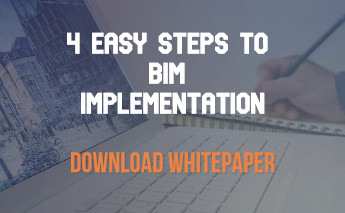|
Getting your Trinity Audio player ready...
|
BIM, i.e. Building Information Modeling) is one of the current topics used in construction industry. Most of the projects are executed successfully by utilising BIM. BIM constitutes processes for creation and management of all information in a project. The information which is required before the construction, during or after the construction, everything is managed through BIM. The output thus created during the process is called Building Information Model which is the digital description of every feature of the asset built. This way, BIM is renowned in all construction and infrastructure fields including engineering, architecture and design.
Growth and Benefits of BIM
If we see the records in the year 2009 and compare to the present year, 2017, we can see a vast difference in the utilisation of BIM. The rate of growth of use of BIM in engineering and construction has been very high in these 8 years.
- BIM is a fast moving process and technology that increases construction competitiveness.
- It helps in enhancing image and promoting improved performance for the construction industry.
- Talking about the benefits, BIM enables better design coordination, improved constructability and flow of accurate set of information. It is a very effective means for the facility manager to conduct operations for designing and construction.
- BIM promotes greater collaboration and transparency between suppliers and thus reduces the risks, wastes (through three levels of supply chain including procurement, process and material) and errors faced during construction work thereby helping in saving time and money.
- BIM is used as a planning clash detection tool, its 3D model detects the interference during construction process and RFIs are reduced significantly. This helps in saving good amount of money. This tool is thus helpful in healthcare projects as it solves the complexity arising due to plumbing, electrical or mechanical systems.
- BIM will enable intelligent decision making about construction methodology, working arrangements with better safety, high energy efficiency leading to carbon reductions and a significant focus on the lifetime performance of facilities or assets.
- This will directly benefit the economy that will result from better buildings and infrastructure bestowed by the construction industry.
- BIM is also contributing to innovation in software industry as there are creation of software products and services associated with BIM. We can see some development of value adding applications to the existing systems, also creating more opportunities in the area.
- Using fully integrated BIM, countries will become digitally built and international BIM standards will be set enabling software to work together more effectively.
- A pilot programme by Government shall help for the collection and analysis of BIM data thereby capturing lessons and sharing best practices.



Leave a Reply